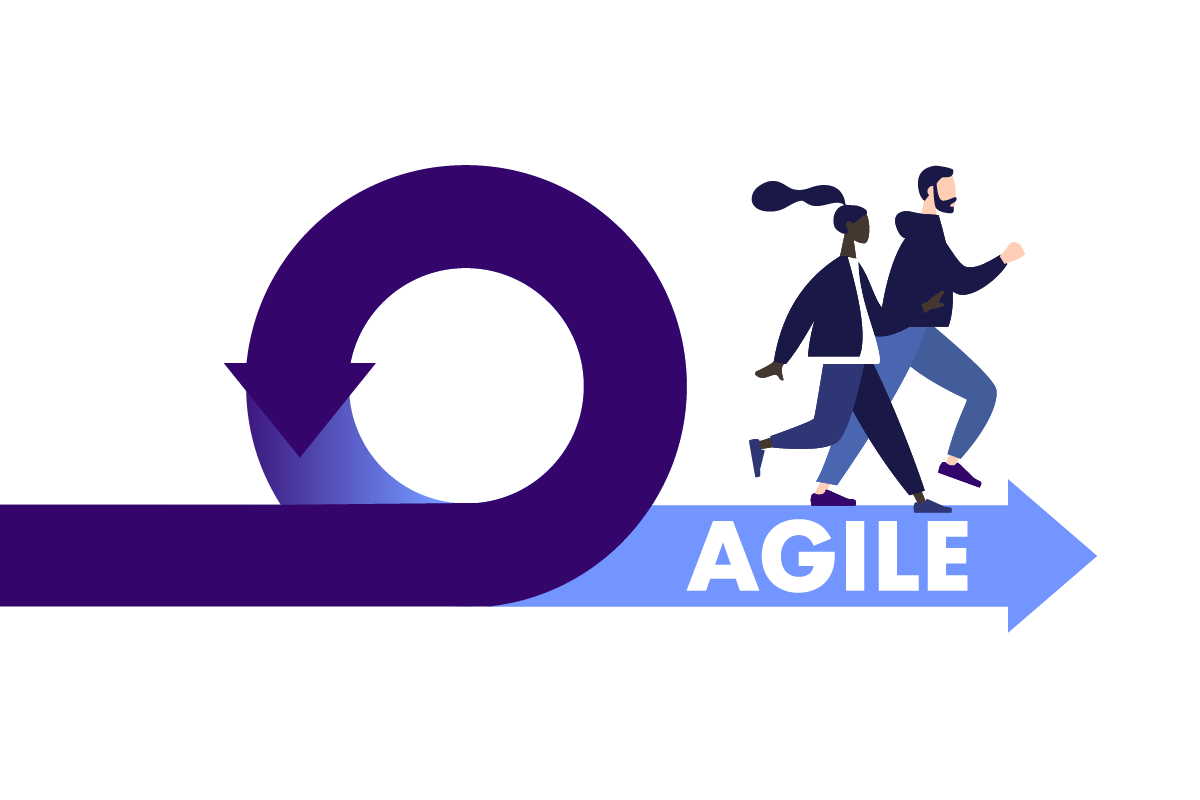Why Agile project management is best for remote teams

The office provides many support structures to keep the train on the tracks in regards to project delivery, not least the guilt of passing colleagues in the corridor when you have not done your job. Take the office away and it’s much easier for the same project to come off the rails when colleagues are safely tucked away in their own locations and only need to send excuses by email or instant messaging.
Without the face to face contact, impromptu office chats and the general visibility of the office, it is quite easy for overall team output to slow down. While individual productivity might increase, consolidating it into team performance can become more difficult. One answer to that problem is Agile project management. Making the switch to the methodology could be the difference between your remote team succeeding or failing.
Break silos
Agile software development has taken hold of IT departments the world over. The methodology allows you to break large projects down into more manageable tasks, which are tackled in short iterations or sprints, enabling you to adapt to change quickly and deliver work fast. And it translates well to project management as well.
Having incorporated Agile project management into our company culture for a number of years now, we found that we have grown to be more effective than ever as a remote team. Rather than restrict ourselves to a particular strand of Agile, we combine different parts of Scrum and Kanban methodologies to get the best out of our multi-skilled team.
For instance, we have a morning stand up every day like a scrum team. This usually takes no longer than 15 minutes and involves each member detailing what tasks they have in store for the day and if they need anything from other colleagues to complete. This fosters frequent communication and transparency when working remotely and can help to prevent inevitable blockages. It also enables us to identify problems immediately and brainstorm solutions as a group, if required.
Avoid frequent context switching
Another area where you can become exposed from remote working is context switching. When staff are away from the office and left to their own devices, it is a lot easier for team members to pull different directions and create a lot of waste.
Using techniques from Kanban, which has more of an emphasis on continuous delivery, we avoid context switching by creating a culture where team members do not start a new task before completing a current one, unless there are factors outside of their control blocking the current task. Our daily stand up will alert colleagues if they are holding up tasks for other team members and they can adjust their workload accordingly.
We’ll package projects into a bundle of smaller tasks so that work can continue as much as possible, or if there is a large task that can not be broken up then team members will focus on it until it’s completed.
Do not micromanage
Agile is all about delivering high value. This is done by self-organised and empowered teams, so it is imperative to trust the team to do their job. Hence, we let team members take the lead on tasks and projects where they feel comfortable working on rather than handing out assignments arbitrarily. We also try to match team members with the tasks they enjoy doing. If we have a graphics designer that loves illustrating then they’ll be first in line for tasks that require illustration.
Once we know we have the best people on the job then we let them work. It’s the team members that are best placed to provide estimations, report problems and find solutions, and the manager is there to enable communication. Rather than set false deadlines that cause stress and create friction, this helps align the management style with the natural time management freedom afforded by remote working.
These are just some of the aspects of Agile project management that help us to create the environment for a connected remote team that’s constantly focused on delivery and solving problems along the way. The trick is to utilise aspects of Agile you feel would be beneficial for your team and mould them to fit the way you work.






